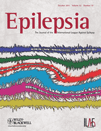Incidence of kidney stones with topiramate treatment in pediatric patients
Summary
Purpose: We ran this study to assess the incidence of nephrolithiasis in a group of children on topiramate (TPM) therapy for at least 1 year.
Methods: In this retrospective observational surveillance study, we reviewed the medical charts of children on TPM for at least 1 year seen at the pediatric neurology department during the period from 2005 to 2010 at King Fahad Medical City. Children with a normal baseline ultrasound report were included. Follow-up ultrasound reports after at least 1 year were collected. However, patients with any evidence of chronic illness or medications that may affect the kidney functions in addition to those who are not compliant with the prescribed dose were excluded. Family history of renal stones, symptoms suggestive of urologic disorders, and comorbidities were recorded.
Key Findings: Medical charts of 96 children on TPM with a mean age of 6.9 (±3.8) years were reviewed; 52 (54.2%) of the children were male. The follow-up ultrasound showed that five children (5.2%) had developed kidney stones. The occurrence of kidney stones was found in four female patients (80%) versus one male (20%) (p > 0.05).
Significance: Long-term use of TPM may result in increased incidence of asymptomatic kidney stones in the pediatric population. Hence, routine baseline and follow-up ultrasound of the urinary system should be recommended during the use of TPM in children.




